Violet "LE-Lovely Creole"
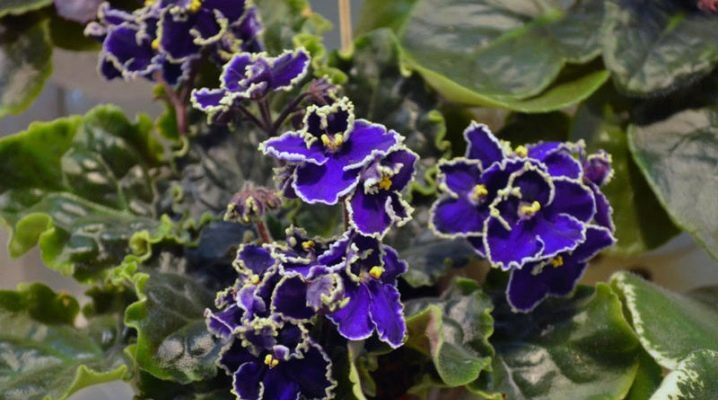
Violet "LE-Lovely Creole" belongs to the genus Saintpaulia. These herbaceous plants not related to the usual room violet, but for convenience, this is how this flower will be called in the article... Sometimes saintpaulias are called the uzambara violet, which also does not in any way make these two plants related.... Even the growing conditions of these two crops are significantly different.
Description
Variety "LE-Wonderful Creole" is characterized by very interesting flowers of a deep blue shade with a green ruffled frame. The size of the buds is about 5 cm in diameter. In too warm conditions, the color of the border looks dull; in cold weather, the petals are filled with a bright juicy color. The flowering is undulating, lasts more than a month. The buds themselves bloom rather slowly.
The flower stalks are burgundy, very resistant, so many flowers are placed on them. With a lack of light, the peduncles are directed in different directions. The variety blooms in a bouquet, but does not form a large hat.
The leaves are quilted, have a dark green color, are covered with a light nap, the edges are slightly wavy. The rosette is symmetrical, even, neat, usually 25-30 cm in diameter.
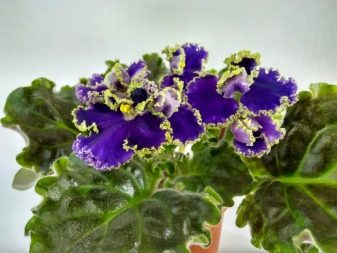

Conditions of detention
In order for the violet to delight with abundant full-fledged flowering, it is necessary to provide her with the correct conditions of detention.
- Provide the Creole with 14 hours of daylight in the summer and 10-12 hours in the winter. For natural, moderate light, it is recommended to place the flower pot on the east or west side. If the culture is grown on a south window, then it is important to create a shady area for it, otherwise ultraviolet rays can provoke burns on the leaves. In winter, experienced florists advise using phyto or fluorescent lamps.
- The optimum temperature at which the variety will feel comfortable is + 23 + 25 degrees in summer and + 18 + 20 degrees in winter. Keep in mind that under too warm conditions during flowering, the violet will not be able to please with the most vivid beauty of the buds.
- The moisture index for growing "Creole" is 50-60%. To achieve the desired level, you can systematically spray water in the room. Try to avoid getting water on the plant. Violet leaves have a fleecy texture, which is why water stays on the surface and does not evaporate for a long time, which can lead to decay. Household air humidifiers and decorative fountains will also help maintain humidity levels. Even a container of water placed next to the pot will help to save the situation in a dry room.


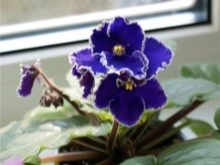
Transfer
Special attention should be paid to the rules for transplanting "Creole". It should be borne in mind that Saintpaulia is actively developing in wide, but small containers. The optimum diameter of the pot is 8-10 cm, the volume is 0.3 liters. If a large pot is chosen for transplanting, then the florist may not hope for a quick flowering. The fact is that the violet begins to bloom only after its roots fill the entire volume of the container. The Creole needs a transplant every year. Young flowers are transplanted twice - in spring and autumn.
When transplanting, the lower wilted leaves are eliminated, the stem is deepened into the ground to the level of the lower leaves.
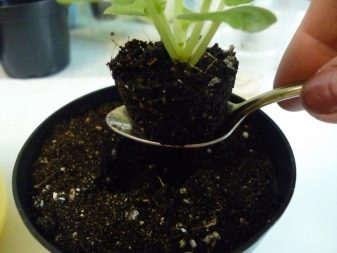

Saintpaulia prefers to grow in loose soil with a neutral or slightly acidic reaction. More often, experienced florists recommend buying a ready-made mixture with the addition of vermiculite or perlite for additional loosening as a soil. If the soil is being prepared on its own, then you can use the following recipe: mix peat (3 parts), sheet soil (5 parts), sand (1 part), sphagnum moss (1 part), vermiculite (0.5 part), charcoal (1 part).
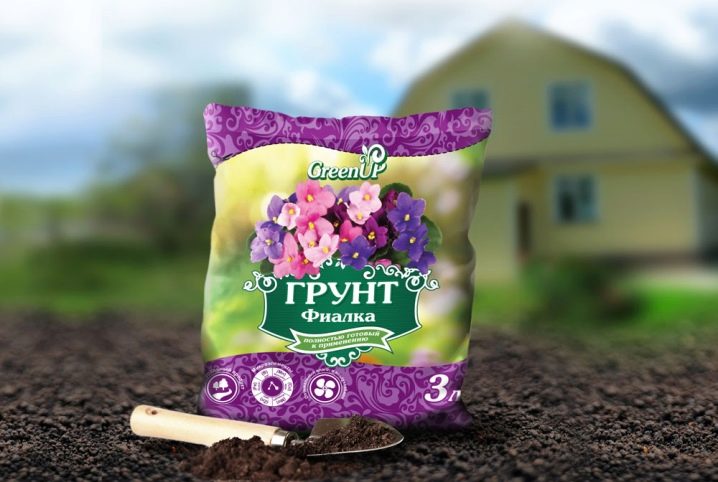
Do not use outdoor soil, as it contains a large amount of fungi, bacteria, larvae. Better to take land from a forest located far from the city. In order to rid the soil of larvae and microbes as much as possible, it is recommended to heat it in an oven or microwave. To transplant a violet, follow these steps.
- Carefully remove the plant from the previous soil, inspect the roots for rotten and wilted parts. Wash off the soil from the roots, disinfect them in a weak solution of potassium permanganate. Remove lifeless parts. If after stripping the root system becomes smaller, then change the prepared new pot to a container of a smaller diameter.
- At the bottom of the container, lay a drainage layer at least 4 cm high. Fill with new soil, deepen the plant to the lower leaves.
- Cover the pot with perforated plastic wrap for a couple of days. This process will retain moisture in the soil. You cannot water the flower for the first 2 days after transplanting.
- If the plant needs an unscheduled transplant, for example, when the soil becomes acidic after waterlogging, then it is important to cut off all the flowers, since after transplanting the culture should spend all its energy on rooting and adaptation, and not on flowering.

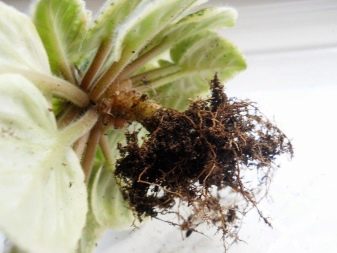
Diseases and pests
Check out the signs of the most common Saintpaulia ailments and pests. as well as methods of dealing with them.
- If brown spots have formed on the leaves, then this may be an infection. late blight. The disease could be provoked by the high humidity of the soil and air, as well as the low temperature in the room. Spraying with "Hom", "Oxyhom" means will help to save the plant at an early stage. If a flower is severely affected by an ailment, then it can no longer be helped.
- Seeing brown petioles on the leaves, it can be assumed that the plant is sick. fusarium. The disease is provoked by waterlogging, cold water, sharp fluctuations in temperature. The drug "Fundazol" will help to cope with the disease.
- White bloom on the leaves indicates the presence of powdery mildew. This ailment is caused by a lack of light, cool air, a lack of phosphorus and potassium, and an excess of potassium. To save the plant will help the means "Forecast", "Topaz" or spraying with copper sulfate.
- If the grower noticed that the leaves were gnawed, brown or black dots formed on the leaf plate, then the plant was probably attacked thrips. The preparations "Fitoverm", "Actellik", "Aktara" will help to cope with them.
- Reddish-brown spots and deformation of the leaves may indicate damage to the flower. mealybug... Individuals can be seen with the naked eye, insects are white in color. The means "Alatar", "Aktara", "Fitoverm", "Aktellik" will allow to destroy the pest.
- Sticky deposits and brown spots on the leaf indicate aphid attack. To eliminate insects, the plant can be washed with soapy water and then sprayed with Mospilan or Aktellik.
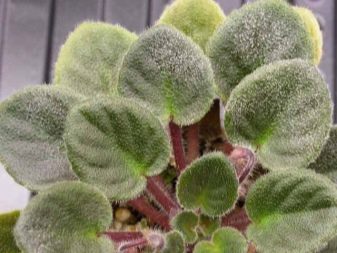
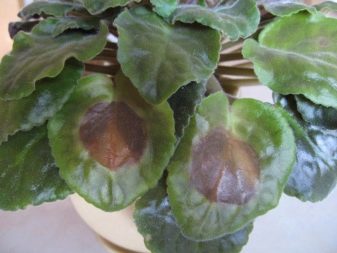
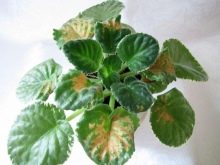
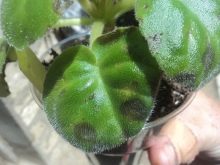

To protect the plant from diseases and pests, it is important to follow prevention methods.
- Leave a copy purchased from the flower department in quarantine for at least a month. In this case, the brought diseases and pests will not be able to infect neighboring plants.
- If the grower suspects the presence of a disease or damage to the flower by a pest, it is recommended to spray the culture with Fitoverm or Fitosporin. They will not harm, even if the plant was still healthy.
- Do not forget to calcine the new soil each time you transplant.
- Maintain the temperatures indicated above, do not keep the violet in an extremely cold or very humid place.
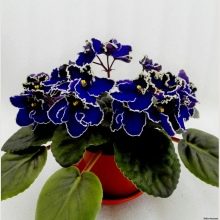

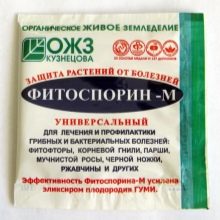
How to grow a violet "LE-Lovely Creole", see the next video.































The comment was sent successfully.